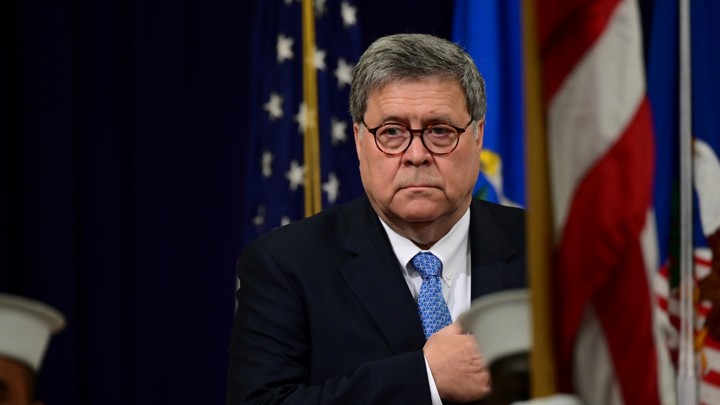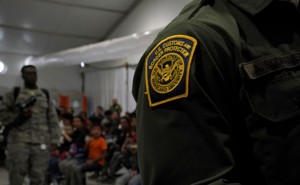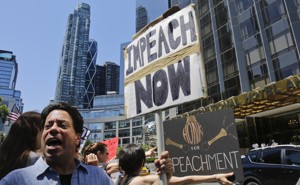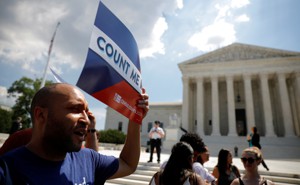perhaps barr can opine on joseph mondello's heir at nassau otb who closes the holy church of nassau otb on his easter sunday as oppossed to the other guy's?
Barr Won’t Get His Macabre Holiday Celebration but can he please tell andrew cuomo, joseph cairo, kevin mccaffrey suffolk county republican legislator president of teamsters local 707 that the term easter sunday in ny pml sec 109 is vague, indefinite and or overly broad. when is easter(s) sunday(s) in 2019(calendar undpecified)
During the late-13th-century siege of Valencia, Spain, legend relates, Doña Jimena Díaz strapped the corpse of her husband—the legendary warrior El Cid—to his horse to lead his disheartened troops. Perhaps not since that incident has a group of fighters bound itself so tightly to a cadaver as the Trump-era conservative legal movement, which has clasped capital punishment to its bosom while the nation, unevenly but unmistakably, turns away from it in disgust.
Yesterday, Attorney General William Barr announced that five executions will be carried out by the federal Bureau of Prisons from December 9 to January 15. The timetable is breathtakingly ambitious: The federal government has carried out a grand total of three executions since Congress reinstated the death penalty, in 1988, and it has not executed anyone since 2003. Executions may take place at some point, but it is likely the nation will be spared Barr’s macabre holiday celebration this year. There are three major reasons for this.
First, Barr’s new addendum to the Bureau of Prisons execution protocol, filed with the U.S. District Court for the District of Columbia, specifies that pentobarbital sodium will be the sole lethal-injection drug. Pentobarbital is quite lethal—but it is also in short supply. The largest manufacturer, Lundbeck, banned the sale of the drug for execution purposes eight years ago. Texas has reportedly amassed 27 lethal doses (including some that have expired and thus may not work as desired). Like a number of death-penalty states, Texas keeps its sources secret, but last year, the BuzzFeed News reporter Chris McDaniel discovered that at least some of the state’s supply had been bought from a business called Greenpark Compounding Pharmacy, a Houston provider with an abysmal safety record. State officials placed Greenpark on probation in 2016, and last year the Food and Drug Administration issued a warning letter notifying Greenpark that its products “may have become contaminated with filth or rendered injurious to health.”
Other death-penalty states have had similar problems getting hold of pentobarbital. And although it’s possible these states will all cheerfully share their hard-won stashes as a holiday gift to the federal Big Brother, that doesn’t seem entirely likely. I asked the Bureau of Prisons whether it had pentobarbital on hand or whether it had plans for where it would get some, and received a three-word email: “decline to comment.”
MORE BY GARRETT EPPS
The second problem is Barr’s stealth procedure in adopting the new protocol. Barr filed his addendum as a case document in the D.C. District Court case called Bourgeois v. Department of Justice. Albert Bourgeois, one of Barr’s five targets, has been suing the federal government since 2012. Among other things, he argues that the Justice Department has no statutory power to produce a death protocol (curiously enough, the Death Penalty Act directs the federal government to use the protocol of the state where the execution will take place); beyond that, he argues that the Justice Department, in producing its original death protocol, failed to follow the requirements of the Administrative Procedure Act.
That claim seems hard to dismiss out of hand. In fact, the argument is similar to the winning claim in June’s census decision—the protocol may be entirely valid, but the government has to adopt it properly. A federal court may stay executions pending a decision in that case, or even order the Justice Department to go back and touch the APA bases. Either way, the case probably will not be done in time for Barr’s holiday special.
In his lawsuit, Bourgeois is represented by a Pennsylvania federal-defender office, which introduces the third obstacle to the proposed winter morbidity fest: The five condemned inmates Barr selected for execution may attempt habeas corpus challenges to their sentences. Technically, such claims must be brought soon after sentencing, but courts will still entertain exceptions for various reasons. (I wrote about this at more length in June.) And the five will have counsel ready to fight for them.
Unlike some state prisoners, many federal death defendants have first-rate representation. Jobs in federal-defender offices are prized; the lawyers who hold them are highly qualified when they arrive and tend to stay for years, acquiring powerful experience and training. Thirty years ago, as a summer clerk in a federal-defender office, I learned one other thing about them: They do not like to lose.
A recent study cited to me by the Duke Law professor Brandon Garrett, author of End of Its Rope: How Killing the Death Penalty Can Revive Criminal Justice, notes that since the federal government reinstated the death penalty, the attorney general has authorized capital charges against 515 defendants. After pretrial skirmishing, 301 were brought to trial. Sixteen are still facing charges, and others have been exonerated; of the defendants who went to a jury, roughly two-thirds were sentenced to life in prison rather than death. Only three have been executed, and 62 remain on death row.
In other words, a federal death sentence is hard to obtain, and will be fought up to the end.
Barr and the Justice Department will have trouble shifting those numbers, Garrett suggested. As for a wave of federal executions, he told me, “I really don’t see it.”
As noted above, the death penalty in the United States is in long-term and almost certainly terminal decline. Statistics released by the Justice Department the very day before Barr’s surprise announcement revealed that the number of prisoners on death row has now dropped for 17 straight years. Some states have abolished capital punishment entirely; others have limited the offenses eligible for a death sentence. (Oregon’s legislature, for example, voted early in June to limit death sentences to terrorists and to murderers of police or children.) The laws are being changed because capital punishment is expensive to operate and growing more unpopular with the public. That declining popularity is reflected in fewer juries imposing it.
The federal death penalty is, to my eye, as flimsy and sinister as its state-level counterparts. Of the 62 prisoners on the federal death row, 26 are African American, 7 are Latino, one is Asian American, and one is Native American. (The five prisoners selected for execution by Barr include the one Native person, one black prisoner, and three whites.) Two-thirds of the prisoners on the federal death row come from “death belt” states—essentially the old slave South—where U.S. attorneys seem more eager to seek death than elsewhere, and where race is still a major factor in justice systems. That’s why it shouldn’t come as a surprise that the condemned federal prisoners are disproportionately nonwhite. (Of the three actually executed in the 20th century, one was white, one was black, and one was Latino.) In other words, even reflected in the federal mirror, the death penalty shows a version of the same ugly face—a discriminatory and arbitrary relic of the era of slavery and judicial terror.
I can’t come up with a logical explanation for Barr’s feckless quest for death. Even the politics seem opaque; I suspect Trump’s base cares far more about immigration than about an occasional execution. Trump himself may just want to sign death warrants the way he wanted a Soviet-style military parade—to show off his power.
Or, let’s face it: There may not be a “real” reason at all, just the malignant flopping of a deteriorating mind. As my colleague Adam Serwer wrote not long ago, in the bleak spiritual landscape of Trumpism, “the cruelty is the point.”
We want to hear what you think about this article. Submit a letter to the editor or write to letters@theatlantic.com.







No comments:
Post a Comment